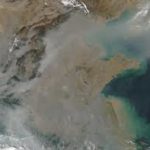Tornado And The Devastating Power
A tornado is a tunnel shaped, furiously rotating column of air. It is also referred to as a twister or whirlwind and is often highly devastating. The sight of a tornado is fascinating, but people prefer not to see one at close quarters due to its furious devastating nature.
How is a tunnel shaped tornado formed?
Tornadoes form in different shapes and sizes, but the typical form is a visible funnel. From the base of a huge thundercloud, warm and humid air spirals upward. The rotation of air about the central axis becomes faster and quicker and finally a funnel appears on the underside of the cloud which gradually descends towards the surface of the earth. This results in creation of a vortex. As soon as the column of air rotating at high speed touches the ground, everything in its path is hurled upwards. The devastating impacts of tornadoes are often limited to small area. Locations which witness heavy rains and thunderstorms are more prone to tornadoes.
What is the duration of a tornado?
A tornado is almost invisible in the initial stages of formation. The tornado has a good source of warm, moist air flowing inward to power it. Once the pressure inside the vortex drops, the air cools, water vapour condenses and the storm churns up everything in its path. Thus the tornado reaches the "mature stage". This stage lasts from a few minutes to more than an hour. The average life span of a tornado is 10 minutes. During the mature stage, a tornado becomes the most furious. Meanwhile, an area of cool surface winds begins to wrap around the tornado. This prevents the inflow of warm air to the tornado and it gradually dissipates.
How fast is a tornado?
Tornadoes can vary from size of a few meters to a kilometre in diameters. The speed of rotational movement depends on the wind speed and change in the wind direction. Special radar systems are used to measure the rotational velocity of air. The speed sometimes reaches 500km/h. High speeds are observed in the upper layers of atmosphere. The speed on the Earth surface is much lower, maximum in the range of up to 100km/h, with the average being around 50km/ h.
Why are tornadoes so devastating?
Tornadoes derive the destructive power from the high wind speeds in the centre of the funnel. The velocity of the storm inside the funnel can be even double of that on the surface. Even a tiny dust particle moving at high speed of 250 km/h becomes highly dangerous capable of penetrating anything on its path. Not many trees, vehicles and building can withstand such high speed. It may be remembers that meteorologists still have not fully succeeded in assessing the actual speed inside a tornado.
JohnCS
How does Saffir-Simpson Hurricane Wind Scale (SSHWS) classify hurricanes?









